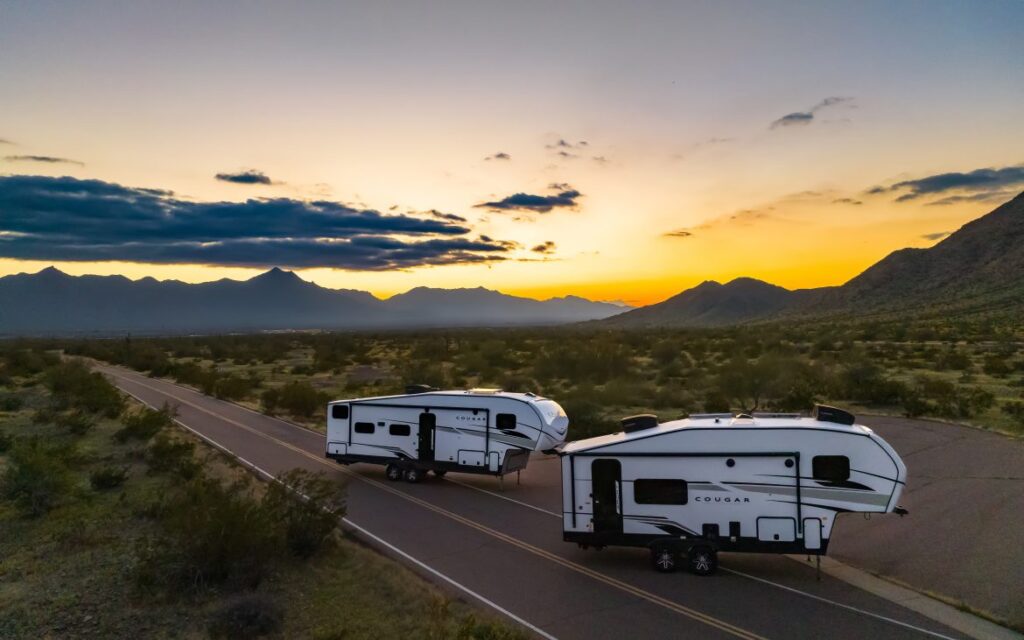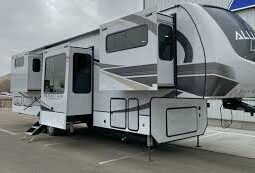Understanding RV Air Conditioners and Furnaces: A Buyer’s Guide
5 min read
RV air conditioners and furnaces are essential to your RV, as they provide the necessary heating and cooling for a comfortable experience. An RV air conditioner works by using an evaporator coil to cool down warm air from inside the camper, while a furnace uses natural gas or propane to heat up the interior. There are also portable options such as window units that can be used when an RV isn’t connected to shore power.
To decide which type is best suited for your needs, it’s important to consider features such as energy efficiency, noise levels, airflow capacity, size requirements, and more when making the final decision on which system is right for you.
Deciding What Air Conditioner and Furnace to Buy
When deciding on an air conditioning and furnace for your RV, the first step is to determine your priorities. Will it be more important for your system to keep the interior of your camper cool during hot summer months, or retaining heat in your RV during the winter more of a concern?
Once you know what type of climate control you need, it’s time to start considering options. Portable air conditioners are a great option as they offer convenience, portability, and flexibility but may require more frequent servicing than other systems due to their smaller size. Air conditioning systems designed specifically for RVs are typically larger and more powerful than portable units and often come with features such as digital thermostats, evaporator coils, and multiple fan speeds.
No matter which type of system you choose, make sure to consider important factors like energy efficiency ratings before buying an air conditioning unit or furnace for your RV. Energy-efficient models help reduce overall power consumption while also helping keep operating costs down over time. If sound sensitivity is important to you when camping outdoors, be sure to check the noise levels associated with each product.
It’s also worth noting that many furnaces designed specifically for RVs have higher airflow capacity compared with standard home furnaces, which means that they can quickly circulate warm air throughout large spaces such as living rooms or bedrooms within a camper trailer without any issue whatsoever.
RV Air conditioners will be the single biggest power draw in your rig, which makes them the appliance that will be most likely to cause voltage drops, especially when they start up. So make sure that you have an RV Surge Protector installed on the shore power line connected to your motorhome or trailer.
Purchasing and Installing a Thermostat for an RV Air Conditioner and Furnace
Once you have chosen the ideal thermostat for your RV’s air conditioner and furnace, it is time to install it. Installing a thermostat requires some basic electrical knowledge; however, if you are unsure of what to do it may be best to consult a professional electrician or HVAC technician. Installation involves disconnecting the power from the unit and mounting the new thermostat in its place before reconnecting the wiring.
When replacing an existing model with a newer one like Honeywell or Nest Thermostats, ensure that all connections are secure and compatible with each other such as having matching numbers of wires between both systems. Make sure that any protective covers used on older models are removed when installing modern ones as this can cause interference or damage over time.
Once installed correctly and powered back up again, programming your RV’s new thermostat should be relatively straightforward according to manufacturer instructions which usually involve setting temperature preferences as well as other settings such as fan speed or heat/cool modes depending on how advanced your system is. Double-check all settings once complete so you can be sure everything is working properly before going out on your next camping trip! Finally, remember to keep an eye on performance over time and replace any broken parts immediately in order to always maintain optimal efficiency levels.
Dometic RV Furnaces
Dometic RV furnaces are a great way to keep your camper or trailer warm and comfortable during cold weather months. An Atwood furnace is generally easier to install, maintain, and use than the other RV furnaces on the market. The design of a Dometic furnace features two heat exchanges that help maximize efficiency, so you’ll be able to enjoy warmer temperatures without having to run the system for extended periods of time. It also runs more quietly than many competing models meaning less noise disruption while camping outdoors.
When it comes time to replace parts in a Dometic RV furnace, there are several options available depending on what component needs replacing. Fortunately, you can often find burners, blowers, igniters, and more at local hardware stores or online retailers such as Amazon Canada.
If you’re not sure exactly which part is needed for your specific model, you may want to consider consulting a certified repair technician instead for additional assistance. Additionally, some dealerships also offer complete systems or individual components so make sure to check with them when searching for replacement parts too!
If you ever need a new furnace, old Dometic models can often be found at discounted prices at Kijiji or Craigslist. Keep in mind however that used units should always be checked thoroughly before purchase, since it isn’t possible to tell how much wear-and-tear they have gone through over their lifetime. Even if you get a great deal on an old model, it could still end up costing you far more money in repairs.
Choosing Your RV Air Conditioner and Furnace
Overall, choosing the right air conditioner and furnace for an RV can be a daunting task, but with some research and consideration, you can easily find the perfect system to fit your needs. When selecting a model, it is important to consider features such as energy efficiency ratings, noise levels, airflow capacity, and size requirements.
Additionally, always check manufacturer instructions when installing or replacing parts to ensure that everything is done correctly. Finally, look out for sales on used models since these may offer a more budget-friendly option than buying new components outright; however, make sure that any pre-owned items are checked thoroughly before purchase so you don’t end up paying more money down the line due to worn-out parts inside! By following these tips, you will have no trouble finding an RV air conditioner and furnace that meets your specific climate control needs without breaking the bank.
The post Understanding RV Air Conditioners and Furnaces: A Buyer’s Guide appeared first on Unique RV Camping with Harvest Hosts.



